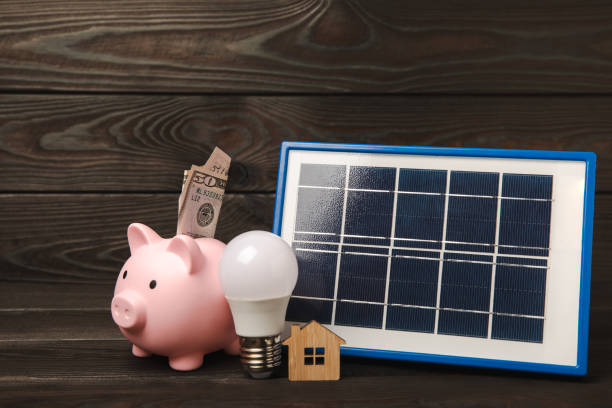
The sun’s light is one of its greatest gifts, as it warms the planet and makes life possible. We are fortunate to have the technology to turn its light into electricity. In recent years, especially, the cost to channel this energy through solar panels has decreased by 70%.
The number of homes that rely on solar power is growing. Since the California Solar Mandate was passed in 2020, all home construction must have solar PV systems installed. There are some exceptions. The solar industry has grown even more as a result!
The photovoltaic process is what makes solar energy work. The PV effect converts sunlight into electricity that can be used to power lights, TVs, and appliances.
You’ll also need solar panel systems and their components. These include solar panels that capture energy, inverters that convert it into usable energy, racking for mounting your system and batteries, and wiring and fuse.
The total cost of a system of solar panels will vary depending on the type of panel used and the installation process. Consider factors such as where you live, available rebates, and tax incentives.
This comprehensive guide covers everything you need to know about solar installation, from the first site visit to financing.
Continue reading to find out what you can expect when you switch to solar.
Solar Panel Types
All solar panels for residential use the PV effect to generate energy. The installation cost will vary depending on the type of solar panel you select.
Grid-tied Solar Panel Systems
The majority of residential solar panel installations will be grid-tied systems.
Grid-tied systems are connected to the home wiring and electrical grid. The system uses solar energy if it is available and electricity from the grid if not.
Grid-tied solar power systems are the least costly type available, as you don’t rely on them to meet your entire electricity needs – instead, you can draw energy from the grid if the solar energy isn’t enough.
Net metering is a cool feature of grid-tied systems that allows you to sell excess electricity for credits against your electricity bill.
You’ll save thousands over the life of the system from the electricity you will save by using the panels and from the net metering profits.
Your system is still susceptible to any problems that would arise from a normal power outage.
You would not be able to continue to use solar energy in the event of a power failure. You’d need an energy-storage system for that.
Grid-Tied Panel Systems with Energy Storage
Solar batteries are used to store additional energy in this type of system. Solar batteries allow the system to operate even when there is a lack of solar energy.
A grid-connected solar panel that does not have energy storage will be unable to use the energy of the sun when it gets dark. In order to gain power at night, it will have to draw electricity from the grid.
Solar batteries allow you to use the electricity stored in the grid at night rather than relying on it.
You will still have power if there is a blackout, unlike a grid-tied basic system. The system will provide enough ability to keep your lights on, especially if you are in an area prone to blackouts and energy shortages.
This system is more expensive than a grid-connected system because of its extra capabilities. Solar battery costs will also be higher.
The upfront costs are worth it over time. California’s time-of-use plan increases electricity costs during peak times, such as late afternoons and evenings. A battery can save you by preventing you from using the grid at these times.
Off Grid Systems
Solar-powered systems do not need to be linked to the grid to function. Off-grid systems are independent and rely solely on solar energy.
The system uses solar panels and batteries to reduce reliance on electricity grids. It has enough capacity to power your appliances and electrical sources.
An off-grid system makes sense in states such as California because there is so much sunlight. You’ll be able to power your home with enough energy if you have the storage space.
The system will have to be big enough to store and collect all the energy that you require.
Off-grid systems cost more because you need to buy more solar equipment. Off-grid systems are the most environmentally friendly option, but they should only be installed by those who can afford it.
A grid-tied system is the best option for saving money and ensuring you have two energy sources available.
Solar Panel Installation Process
Solar panel installation is a process that takes several months to complete. Understanding the steps required to add a system to your house will give you a better understanding of the cost (more about that later).
Initial Visits
An installer will visit your home to assess the property before you sign any paperwork. The installer will look at the type of roof, the angle, and the shading to determine the right system size.
You will get a good idea about the general process before you commit.
After you have signed your contract for solar (whether a loan, lease, or cash purchase), an engineer will visit your home to assess the condition of your house.
Your existing home must be compatible with the new energy system.
Engineers will examine your roof to see if it is structurally capable of supporting solar panels. The engineer will also check your electrical panel to determine if you can supply enough current amps to support a solar panel.
